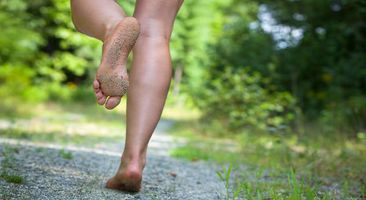Barefoot running: Difference between revisions
No edit summary |
No edit summary |
||
| Line 1: | Line 1: | ||
<div class=" | <div class=" Shaimaa Eldib"> | ||
This article or area is currently under construction and may only be partially complete. Please come back soon to see the finished work! ({{CURRENTDAY}} {{CURRENTMONTHNAME}} {{CURRENTYEAR}}) | This article or area is currently under construction and may only be partially complete. Please come back soon to see the finished work! ({{CURRENTDAY}} {{CURRENTMONTHNAME}} {{CURRENTYEAR}}) | ||
</div> | </div> | ||
Revision as of 13:23, 28 January 2019
This article or area is currently under construction and may only be partially complete. Please come back soon to see the finished work! (3 June 2024)
Introduction:[edit | edit source]
Running has become increasingly popular over the years and provides numerous health benefits including improved cardiovascular health,decreased risk of stroke and hypertension, increased bone mass[1] and psychological benefits such as decreased depression and a positive effect on mood state. Despite its popularity and many benefits runners still experience a high injury rate,with up to 79 % of runners incurring an injury annually[2].Thus, runners have sought numerous strategies in hopes of reducing injury and running faster. One strategy is to run without any shoes at all:Bare foot[3]
Despite the benefits of footwear, interest in barefoot running has increased among the running community, with proposed benefits including a decreased injury rate. Advocates tout the evolutionary success of man as a barefoot bipedal runner. There is also speculation that the development of modern footwear and the associated altered running gait patterns (including a hindfoot strike versus the forefoot or midfoot strike typical of unshod runners) have contributed to injuries seen in runners[4].
WHAT DO WE KNOW ABOUT BAREFOOT RUNNING?[edit | edit source]
References[edit | edit source]
- ↑ Wilks DC, Winwood K, Gilliver SF, Kwiet A, Chatfield M, Michaelis I, Sun LW, Ferretti JL, Sargeant AJ, Felsenberg D, Rittweger J. Bone mass and geometry of the tibia and the radius of master sprinters, middle and long distance runners, race-walkers and sedentary control participants: a pQCT study. Bone. 2009 Jul 1;45(1):91-7.
- ↑ Hreljac AL, Marshall RN, Hume PA. Evaluation of lower extremity overuse injury potential in runners. Medicine & Science in Sports & Exercise. 2000 Sep 1;32(9):1635-41.
- ↑ Hanson NJ, Berg K, Deka P, Meendering JR, Ryan C. Oxygen cost of running barefoot vs. running shod. International journal of sports medicine. 2011 Jun 1;32(6):401.
- ↑ Giuliani J, Masini B, Alitz C, Owens LB. Barefoot-simulating footwear associated with metatarsal stress injury in 2 runners. Orthopedics. 2011 Jul 1;34(7):e320-3.







